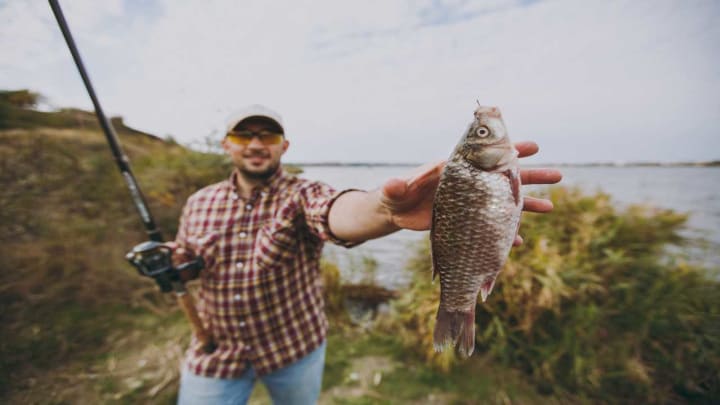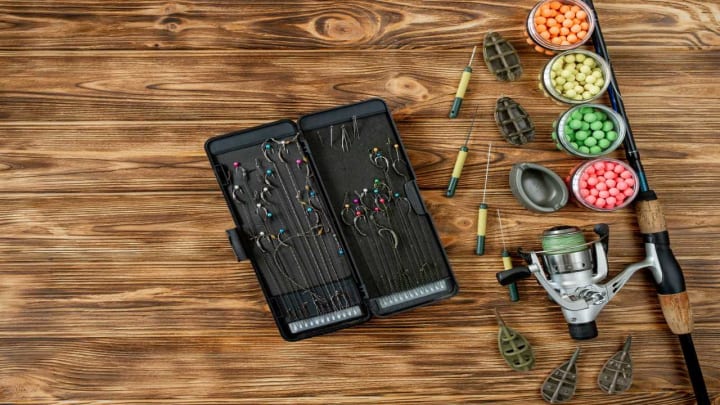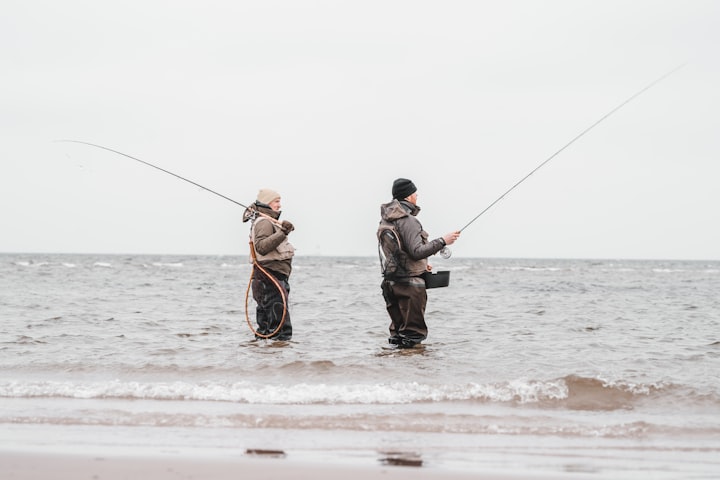6 Mistakes People Make When Using Fish Finders
How to use Fish Finder Effectively?

6 Mistakes People Make When Using Fish Finders
- Choosing the Wrong Fish Finder for Your Needs
- Buying a Fish Finder Without the Necessary Accessories
- The Wrong Type of Bait Can Obscure the Signal From Your Fish Finder
- Using a Fish Finder With an Incorrect Frequency (E.g., 25 Khz When Fishing at 50-200 Feet)
- Spending Too Much Money and Buying the Most Expensive Model Available.
- The Best Time to Use Your Fish Finder
1. Choosing the Wrong Fish Finder for Your Needs:

Choosing the wrong finder for your needs can lead to a disappointing fishing experience. Once you have determined which type is best for your situation, many features should be considered, such as how much power does it need? Fishing Wire? Fishing Rod? Is this finder waterproof? Does it come with a transducer? What is its depth range? Does it come with an instruction manual? What screen size does it have? It is important to consider all these questions to make the right decision on which fish finder will work best for you! These are just some questions to help guide you through the process.
Your first choice may not be your last!
Fishing finders use sonar to detect objects underwater and determine their size. There are three types of fishfinders: Downscan (DS), Side Scan (SS), and Sonar Fishfinder (SF).
The DS and SS fall in the category of the single beam while the SF falls into multi-beam. The major difference between these two categories is that SS and DS cannot see anything below them, whereas SF does not have this limitation. These properties make SF valuable for anyone who likes to fish on shallow waters or close to shorelines where there’s little room above water for boats or people to move around freely.
2. Buying a Fish Finder Without the Necessary Accessories

How do you go about buying a fish finder without the necessary accessories? There are many different fish finders on the market, but what about all of the necessary accessories? It's important to know that you can't go out fishing without a boat or some type of watercraft.
You also need to consider buying an anchor and tackle box for your fishing trips. If you're a fisherman looking to buy new gear, but don't know where to start, it's important that you get the right accessories too. You need a fish finder and Gps for your boat, as well as an electronic navigational system in case your GPS fails.
The most common accessories needed with a fish finder are an external antenna, transducer cable, power cord/adaptor and mounting bracket or suction cup mount depending on how you plan to use it.
3. The Wrong Type of Bait Can Obscure the Signal From Your Fish Finder:
One of the most difficult parts of fishing is deciding what type of bait to use. However, if you are using a fish finder, this can be made easier by knowing which types of bait will work best with your equipment. In some cases, it may not matter and there are many different options that could lead to success.
There are some tricks you might not know about that could also help you catch more fish. For example, if you're using worms as bait, make sure they are raw and wriggling from being just pulled out of the ground because this will attract the attention of nearby bass.
Using live or fresh bait such as shad or crawfish will also entice wary fish since they'll think they're in danger! Remember to keep your lure size within 5-8 inches long so that you don't scare off smaller species like trout or catfish who only feed
4. Using a Fish Finder With an Incorrect Frequency (E.g., 25 Khz When Fishing at 50-200 Feet)
In order to get the best performance out of a fish finder, it is important to use the correct frequency. There are many different frequencies that can be selected on various models, and they all have their own benefits depending on what you're looking for. For example, if you want to see more small details in the water such as schooling fish or baitfish then you'll want a higher frequency like 200khz.
The frequency of the device has to be right or it won't work properly. For example, if you have a 50/200 kHz unit but your fishing at 2-3 meters deep in saltwater then you should use the 200 kHz setting. If your fishing in freshwater then you will need to set it at 50 kHz for best results. There are many other settings that can be used depending on what type of water and depth level, so always consult with a professional before making any adjustments!
The common misconception is that it's better to buy the most expensive model available. This isn't always true, as cheaper models can be just as good and less expensive. The decision should be based on what you need to use your fishing rod for, not how much money you're willing to spend.
5. Spending Too Much Money and Buying the Most Expensive Model Available:

You might want something heavier if you are going out deep sea fishing or if there are strong currents in your area; otherwise, stick with a lighter weight model that won't wear you down after hours of casting your line into the water or reeling in a big catch.
"The next time you go fishing, are you going to buy the most expensive model available? That might not be a wise decision. Buying the most expensive model will cost more money and if it's too difficult to use or is just plain uncomfortable, then what good does it do?"
How many times have you found yourself at the fishing store, looking for a new rod and reel combo to buy?
There's no need to spend money unnecessarily when there are many less expensive models that provide great quality and service.
6. The Best Time to Use Your Fish Finder
Fishing is a sport that many people enjoy, but it can be difficult to know when and where to fish. One way for fishermen to make their fishing experience more enjoyable is by using a fish finder. A fish finder allows the angler to locate schools of fish in the water near them so they know exactly what's biting right now!
However, there are different types of fishfinders and each one has its own benefits. Some work better in saltwater while others are best for freshwater fishing. This blog post will help you determine which type may be best for your personal needs!
This is because the sun will cast a shadow on any fish nearby and you will be able to see their shape more easily as they swim around. Night fishing can also be productive, but you will have to rely on sonar readings along with intuition and luck in order to catch anything!






Comments
There are no comments for this story
Be the first to respond and start the conversation.